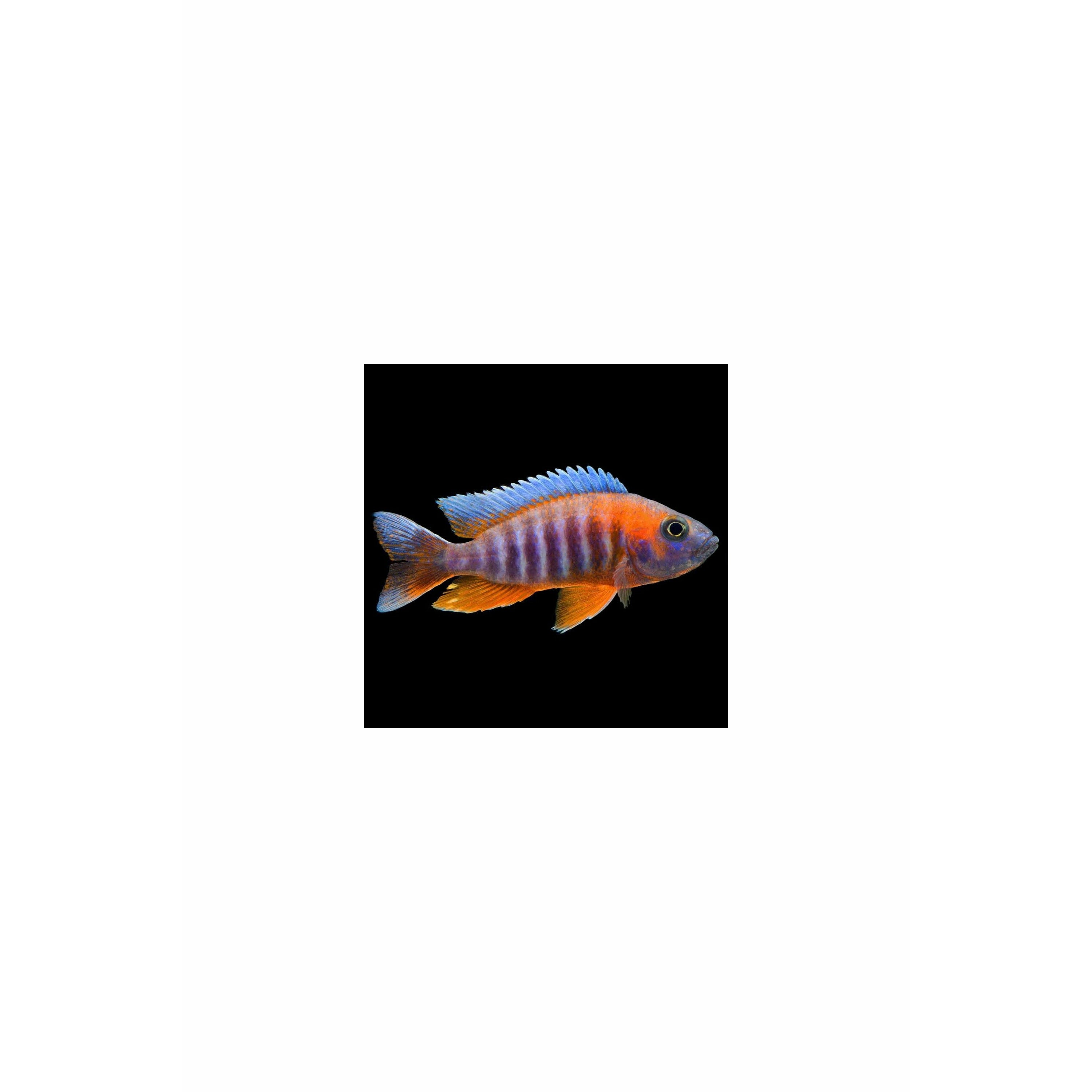
Eureka Red Peacock (Aulonocara jacobfreibergi) is a species of haplochromine cichlid fish endemic is a long time favourite in the freshwater aquarium hobby. Native to Lake Malawi in East Africa, this species is extremely colourful, especially as it approaches adulthood. Males are the most colourful sex, but females are also very colourful. Both sexes have generous blue-red facial and body coloration Males grow noticeably larger and will typically develop extended dorsal and anal fins .Which are all characteristic of many cichlid species.
Eureka Red Peacock will thrive in an aquarium with a sandy substrate and plenty of refuge such as clay pots, driftwood, and rock formations. It typically will not eat ornamental plants, but it does like to do a fair amount of digging, so floating plants and plants that attach to driftwood and rockwork are recommended. As its name states, this cichlid can be aggressive, especially in the confines of a smaller tank. It can be kept with other large cichlids, plecos, catfish, and other large, durable species in a very large tank as long as there is plenty of cover with decor to create broken lines of sight. Territoriality is typically at its peak during spawning. If spawning is desired, tank mates of other species should be avoided altogether, and care must be taken to ensure that the Eureka Red Peacock does not bully or kill the female. It is best to grow a group of juveniles together and allow them to pair off naturally, then give each pair its own tank if one wishes to start a breeding program with this species. Dwarf shrimp and other invertebrates should not be kept with the Eureka Red Peacock Due to its size and waste production, regular water changes and maintenance are a must.
What We Like About This Fish:
- Beautiful coloration in both males and females
- Very hardy with plenty of personality
- Easy to breed in the aquarium
- Excellent species for larger tanks
- Potential to be a "centrepiece" fish
RECOMMENDED TANK PARAMETERS:
- Temperature: 68° - 77° F (20° - 25° C)
- pH: 6.5 - 8.0
- KH: 5 - 25 dKH
- Minimum tank size: 75 gallons for a single adult, 90+ gallons for a pai
CARE GUIDELINES:
- Diet: Omnivorous. A variety of high-quality dry, frozen, and live meaty foods is necessary for optimal health and coloration. Vegetable matter is also regularly required.
Social behaviour: Congregates loosely in groups as juveniles. Territorial during spawning


